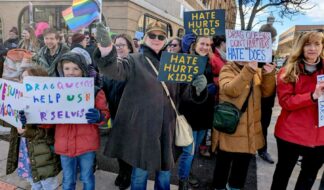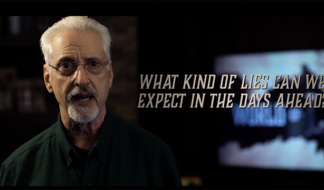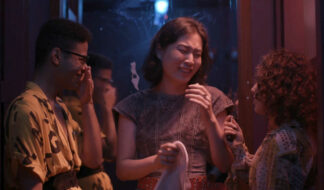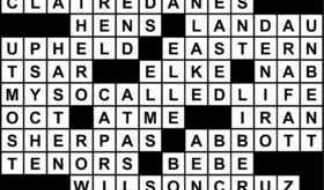by Dan Woog
April 30, 2007
Pity the poor football player. In high school, he's The Man. Guys look up to him, girls want him, and he's got the world by the…you know.
But, according to the National Collegiate Athletic Association, fewer than 6 percent of high school football players continue playing in college. "They turn into nameless nobodies," says Eric Anderson, Ph.D. (www.ericandersonphd.com), a sports sociologist and author who has conducted extensive research on sexuality and athletics. "All the glory is gone. They miss that."
Because football skills are not transferable to most other activities, ex-players have few options. One, however, seems perfect. "Cheerleading needs big, strong men to toss people in the air," Anderson says. There is one problem: Throughout their football careers, players routinely taunt male cheerleaders as "fags."
But college cheerleaders – male and female – need these brawny ex-football players. So they recruit them, in part by "hetero-masculinizing them," says Anderson. "They say things like, 'C'mon, bro. You throw girls in the air, and you'll get all the hot chicks.'"
Something very interesting happens next. The former football players get to know two types of people they've had little contact with: female athletes and gay men. Very quickly, they come to view women as equal, worthy competitors. And they learn that while there are, in fact, gay male cheerleaders, those men out-perform neophyte straight ex-football jocks.
"The misogynistic, macho, homophobic football players' world is spun around," Anderson explains. "They get to know gay men as friends. They accept them as masculine. They have to. There's this internal dialogue: 'I'm involved in cheerleading, so it must be a masculine sport. If these guys do it better than I can, they must be masculine too.'"
Anderson's theories are backed up by research. He conducted in-depth interviews with 68 cheerleaders, and made in-depth observations of 49 others.
But more happens than psychological shifts. The football players-turned-cheerleaders begin to talk with gay men about many things, including sex and sexuality. The team becomes "a safe space to talk openly," Anderson says. "And it becomes a safer place to actually explore sexuality."
Which brings him to an even more intriguing finding. Forty percent of these ex-football players, Anderson has found, have had some form of same-sex experience. They have kissed, mutually masturbated with, or received oral sex from another male, or participated in a threesome with a male and female.
Just as interesting as these results, though, may be the fact that Anderson is not surprised by them. "Our culture is changing rapidly," he notes. "Homophobia is decreasing quickly, and the effects are felt everywhere. The military, fraternities, and sports are catching up with the rest of society."
Men everywhere – including athletes – are becoming "much more comfortable with body contact," Anderson says. "Straight men are leaning together and hugging longer. They're opening up to each other more about their fears, secrets, and insecurities."
And what Anderson calls "the one-time rule of sexuality" – the belief that having one same-sex experience means a person is "gay" – is changing, too. "Straight men have always had sex with men," Anderson says. "Now they're publicly admitting it."
Anderson has also studied 68 gay college athletes in a variety of team sports, and 59 members of a college fraternity. He interviewed many of the 155 students in his university class, all of whom are athletes preparing for coaching careers. They, too, report that same-sex activity happens frequently, and is no longer seen as taboo.
There is little reason to suspect that what goes on at the professional level varies greatly from college and high school, Anderson says. "Pro athletes are predominantly young men, coming out of the same environments I've studied. They may be too scared to have the same degree of same-sex activity, but their attitudes about it are probably the same."
In fact, Anderson says, "cultural views of masculinity and homophobia are changing so fast, the mainstream media has not really kept up. People in their 20s have grown up with the Internet, MTV, and most importantly MySpace. They see gay people all around. It's occurring everywhere, including sports.
"That reduces homophobia tremendously," Anderson continues. "And the more social and legal equality there is, the more freedom heterosexuals have to express themselves and experiment with sexuality."
The implications are profound. In the past, says Anderson, young men had to prove their heterosexuality by acting tough, macho, and cool. As homophobia decreases, they no longer feel pressured to act as "masculine" as they once did. The result: less violence, bullying, and sexism, which, for generations, have been hallmarks of men's sports.
Today – thanks in part to the visibility of gay men – that may be fading. And that is something to cheer.
{TAGLINE Dan Woog is a journalist, educator, soccer coach, gay activist, and author of the "Jocks" series of books on gay male athletes. Visit his Web site at www.danwoog.com. He can be reached care of this publication or at [email protected].}









